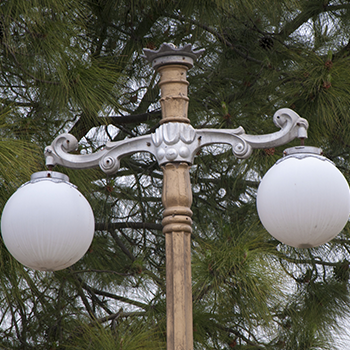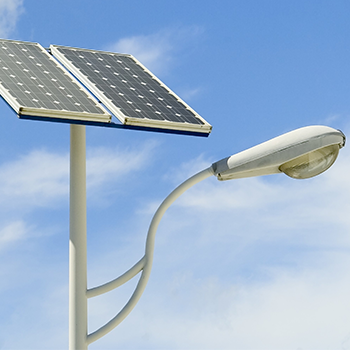



Non-ecological lights are designed in such a way that they emit light in all directions. Also, their ability to use the emitted light for illuminating of a desired surface (road, sidewalk...) is 10-30%. These are the light structures that have a protruding plexiglass ball .
In case a light structure is set at an angle greater than 5° in comparison to the horizon, the result will be light pollution of the sky. This causes unnecessary light emissions n all directions and not towards the surface that needs to be lit up. Use of such light structures is extremely inefficient from energy point of view i.e there are 30-40% losses of electrical energy. Quality lighting is achieved by positioning them horizontally with a ±5° angle thereby lighting up the aimed surface, without lighting up other spaces on the side and/or towards the sky.
Ecological light structures are those lights that fulfill these three rules:
1. Lesser electricity consumption in comparison to a classic light fixture and a lesser emission of greenhouse and other toxic gases into the environment
2.Proper design
3. Proper installation
Ecological light structures have full cutoff and can control light emissions as well as not allow any light dispersion into the environment. This type of lights has a flat glass at the bottom. Cheaper versions come without a glass



In modern times, the people’s need for mobility created a necessity for quality public lights, both during day through natural sources as well as artificial light sources during the night.
Quality light sources during the night enable secure distinction of traffic and uninterrupted activities, meetings, sports, leisure and fun. Outdoor light systems can be divided into road light for traffic, urban lights for stores and pedestrian zones and reflector light for facades and certain objects.
Not all traffic roads and sidewalks of a city need to be lit up at the same level during the night. There needs to be a regulation system in place so that it would be possible to ensure an optimum level of public lights and consider variable conditions. This allows to for ex. understand how much certain roads are lit up late at night. This simple regulation allows for a 20% savings in energy. By using sophisticated regulation systems it is possible to save up to 50%.
The basic function of road lighting is to ensure minimum set value of road lighting, equal illumination and a decrease of headlights flash. Modern public lighting decreases the headlights flash by several 100 times and ensures 70 percent better illumination equality.
Keeping in mind the constantly growing electricity expenses, public lights are responsible for a major part of cities’ and municipalities’ expenses. The public lighting costs include construction, management and maintenance costs as well as electricity costs for the illumination of public areas, roads passing through a neighbourhood as well as unclassified roads.
Traditionally, for illuminating different objects or cultural monuments, the public lighting had always used sodium light bulbs, however they have a bad color factor. That means that they emit yellow color that brings down the ambience and makes people sleepy. If the desire is to make a space more lively, it is better to use a white light source that is similar to the natural sunlight, such as metal halogen or fluorocompact light bulbs, as well as LED diodes
Light pollution effectively is useless and unnatural light emission into the space outside of the zone that needs to be lit up (road, street, square, monument, billboard...). This is caused by improper handling, installation and design of light structures, and results in light pollution of sky and surroundings of the light structure with excess light. This can be avoided by using ecologically conscious lights that don’t emit light outside the area that needs to be lit up.